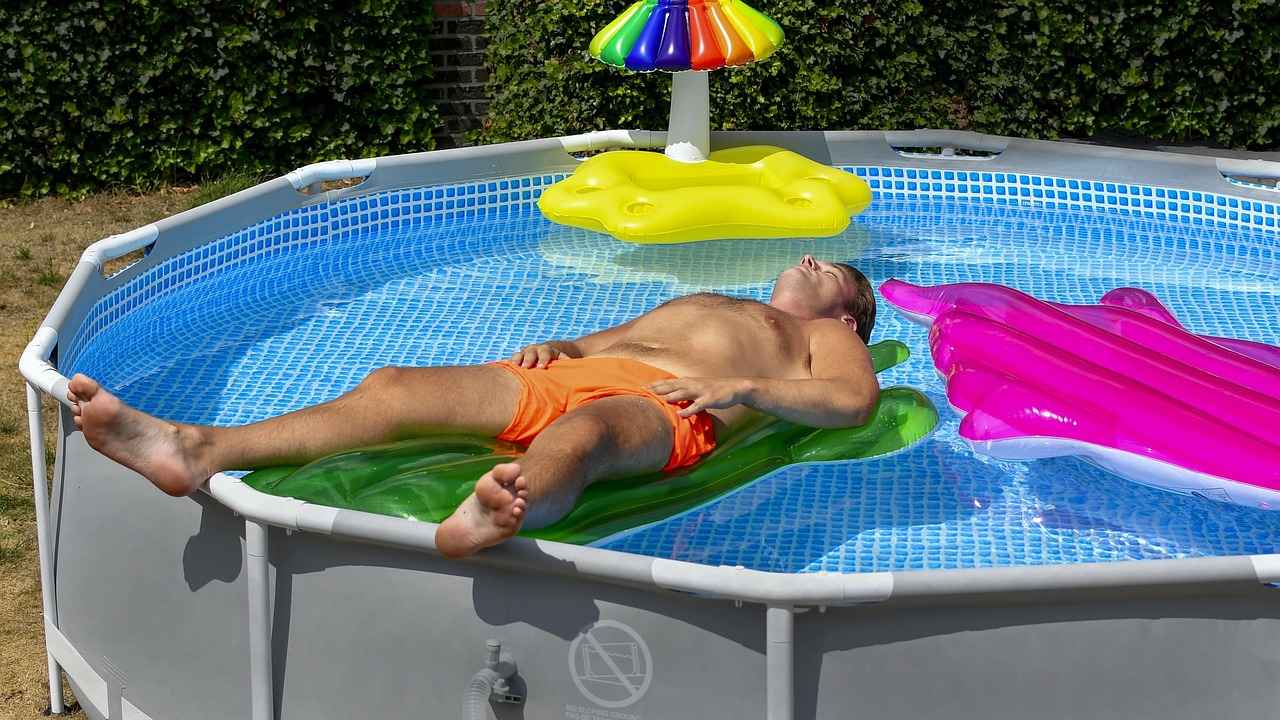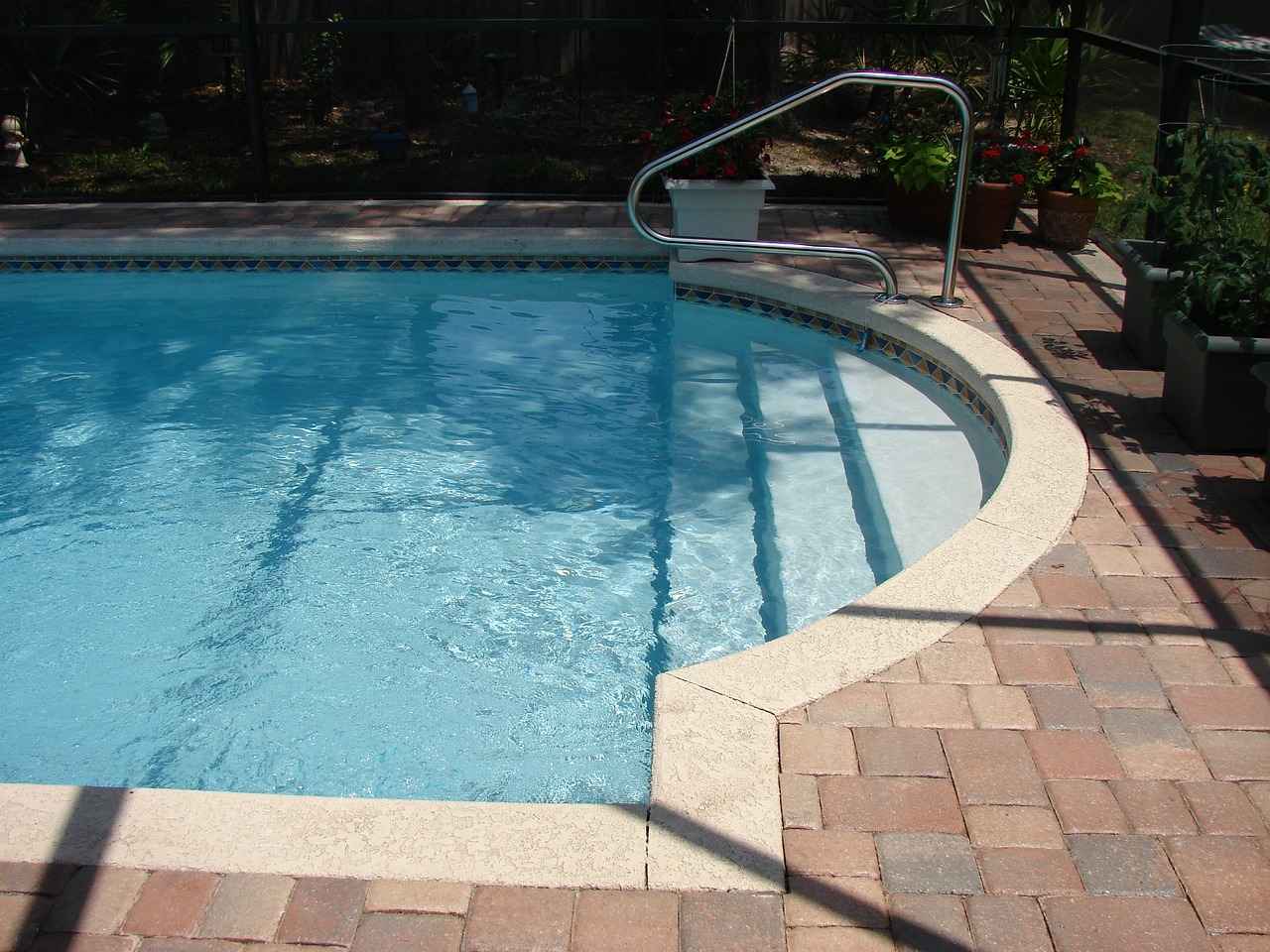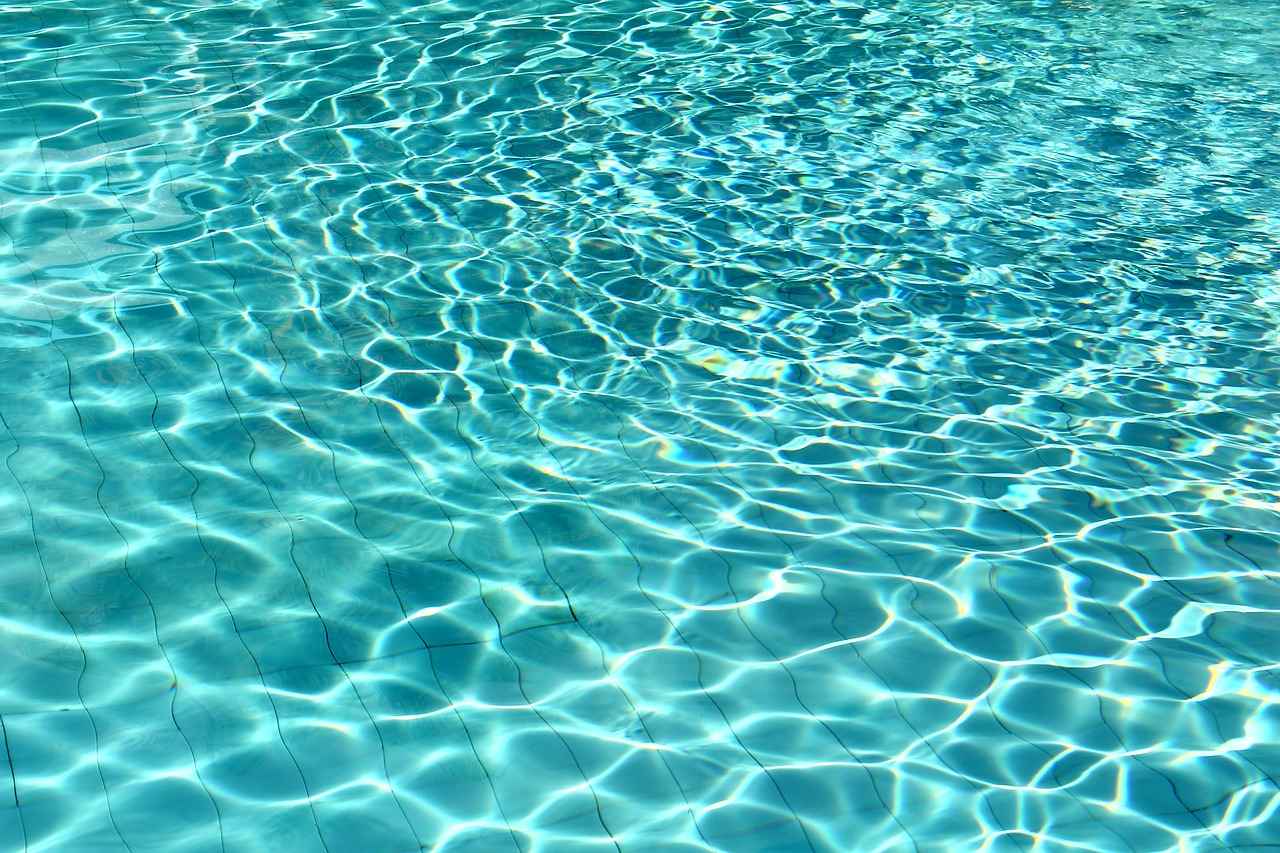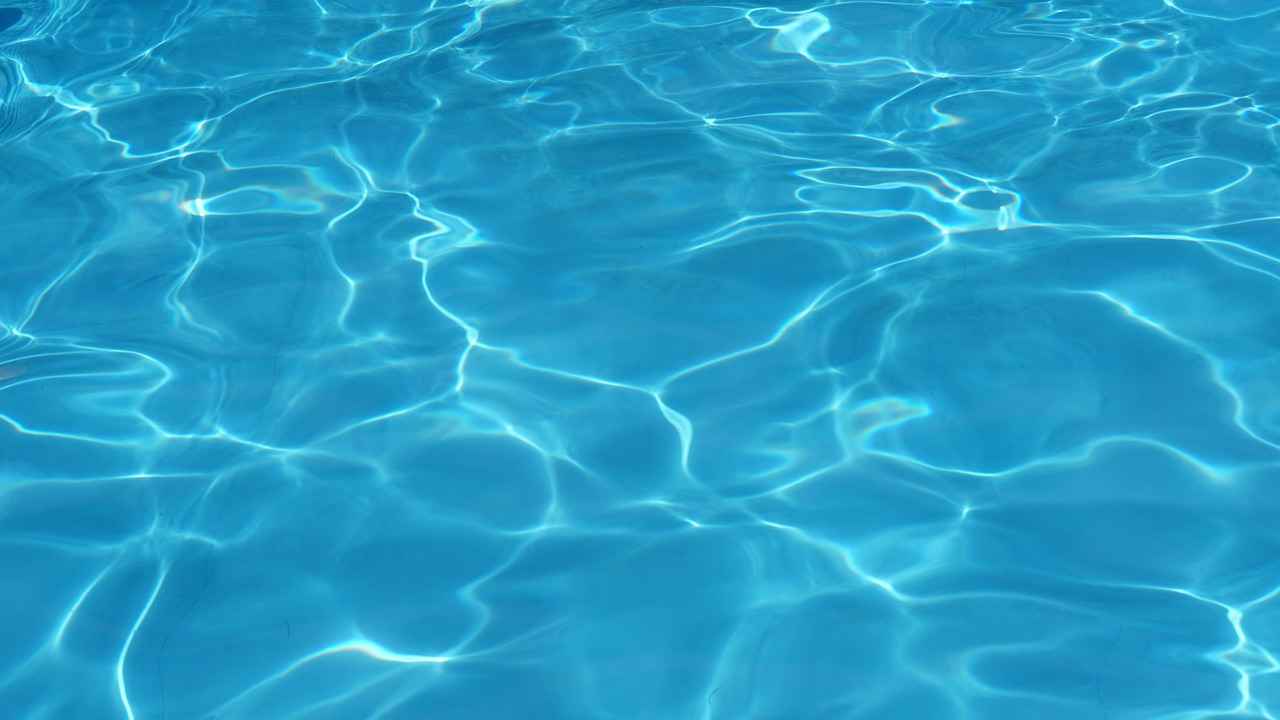Heating a pool can significantly enhance your swimming experience, but understanding the costs involved is crucial for effective budgeting. In this article, we will delve into the various costs associated with heating a pool, providing estimates based on different pool sizes and heating methods. By the end of this guide, you will have a clearer picture of how to budget for your pool heating needs.
When considering the costs of heating a pool, several factors come into play:
- Pool Size: Larger pools require more energy to heat, leading to higher costs.
- Heating Method: Different heating systems have varying operational and installation costs.
- Climate: Regions with colder climates may incur higher heating expenses due to increased energy requirements.
Choosing the right heating method is essential for managing costs. Here’s a breakdown of popular options:
- Gas Heaters: Known for their quick heating capabilities, gas heaters can be expensive due to fluctuating gas prices.
- Electric Heat Pumps: While the initial installation cost is higher, they are more energy-efficient in the long run.
- Solar Heaters: An eco-friendly option, solar heating systems offer potential savings over time, although installation costs can be significant.
The size of your pool plays a critical role in determining heating costs:
- Small Pools: Generally, they have lower heating costs, averaging around $50 to $100 per month depending on the heating method.
- Medium Pools: Expect to pay between $100 and $200 monthly, with operational costs increasing based on usage and climate.
- Large Pools: These can incur costs of $200 or more each month, especially if heated frequently.
Solar heating systems are gaining popularity due to their environmental benefits and potential cost savings:
- Installation Costs: Initial costs can range from $3,000 to $7,000, depending on the system size and installation complexity.
- Long-Term Savings: Although the upfront investment is significant, solar heating can drastically reduce monthly energy bills, often leading to a full return on investment within 5 to 10 years.
Implementing energy-saving strategies can significantly lower your heating expenses:
- Using Pool Covers: Pool covers can reduce heat loss by up to 70%, making them an effective tool for maintaining temperature.
- Regular Maintenance: Ensuring your heating system is well-maintained can enhance efficiency and reduce costs. Regular checks and cleanings can prevent costly repairs down the line.
In summary, understanding the costs associated with heating a pool can help you make informed decisions. By considering factors such as pool size and heating methods, and implementing energy-saving strategies, you can enjoy your pool without breaking the bank.

What Factors Influence Pool Heating Costs?
When it comes to maintaining a comfortable swimming environment, understanding the factors that influence pool heating costs is crucial for effective budgeting. Various elements come into play, each contributing to the overall expense of heating your pool. This section delves into key variables such as pool size, heating method, and climate, providing insights that can help pool owners make informed decisions.
- Pool Size: The size of your pool is one of the most significant factors affecting heating costs. Larger pools require more energy to heat, leading to higher operational expenses. For instance, a standard inground pool measuring 20×40 feet will typically cost more to heat than a smaller 10×20 feet pool. This is due to the increased volume of water that needs to reach the desired temperature. On average, heating a larger pool can lead to costs that are 50-100% higher than those of smaller pools.
- Heating Method: The choice of heating method also plays a pivotal role in determining costs. Common options include gas heaters, electric heat pumps, and solar heating systems. Each method has unique advantages and disadvantages:
- Gas Heaters: While they provide quick heating, they often come with high operational costs due to fluctuating gas prices.
- Electric Heat Pumps: These are more energy-efficient and can result in lower long-term costs, but their initial installation can be pricey.
- Solar Heating: Although the upfront costs may be higher, solar systems offer significant savings over time, especially in sunny climates.
- Climate: The geographical location of your pool can greatly influence heating costs. In warmer climates, heating costs may be lower due to less energy required to maintain comfortable temperatures. Conversely, colder regions may require more energy, leading to higher expenses. Additionally, seasonal temperature fluctuations can impact how often you need to heat your pool, further affecting your budget.
- Cover Usage: Utilizing a pool cover can significantly reduce heating costs. Covers help to minimize heat loss during the night and keep debris out, allowing the heating system to operate more efficiently. Investing in a high-quality cover can lead to substantial savings in the long run.
- Maintenance: Regular maintenance of your heating system is essential for optimal performance. Neglecting maintenance can lead to inefficiencies and increased costs. Routine checks and servicing can ensure that your heating method operates at its best, preventing unexpected expenses.
In summary, understanding these factors is vital for pool owners looking to manage their heating costs effectively. By considering pool size, heating method, climate, and maintenance practices, you can make informed choices that align with your budgetary needs. This knowledge not only helps in accurate forecasting of expenses but also aids in selecting the most efficient heating solutions for your pool.

How Do Different Heating Methods Compare in Price?
When it comes to maintaining a comfortable swimming environment, pool heating is a significant consideration for many pool owners. The choice of heating method can greatly influence both initial investment and ongoing operational costs. In this section, we will explore various heating methods, including gas heaters, electric heat pumps, and solar heaters, to help you make an informed decision based on your budget and needs.
Gas heaters are favored for their ability to heat water quickly, making them ideal for those who want to enjoy their pools on short notice. However, they come with specific costs that must be considered:
- Initial Investment: The upfront cost of gas heaters can range from $1,500 to $3,500, depending on the model and installation complexity.
- Operational Costs: Monthly gas bills can vary significantly based on usage. On average, you might expect to pay between $100 and $300 monthly, depending on gas prices and frequency of use.
- Maintenance: Regular maintenance is essential for efficiency, typically costing around $150 to $300 annually.
Electric heat pumps are known for their energy efficiency, making them a popular choice among environmentally conscious pool owners. Here’s what to consider:
- Installation Costs: The initial cost for electric heat pumps ranges from $2,500 to $5,000, including installation.
- Energy Savings: These systems can reduce energy bills significantly, with average monthly costs around $50 to $150, depending on the climate and usage.
- Longevity: With proper maintenance, electric heat pumps can last over 15 years, providing a good return on investment.
Solar heating systems offer a sustainable option for pool owners looking to minimize their environmental impact. Here’s a breakdown of the costs:
- Installation Costs: The initial investment for solar heaters can be higher, typically ranging from $3,000 to $8,000, depending on the size of the system and installation requirements.
- Long-Term Savings: While upfront costs are significant, solar heating can lead to substantial savings over time, often reducing heating costs to less than $30 per month once installed.
- Maintenance: Solar systems generally require less maintenance, with costs averaging around $100 to $200 annually.
| Heating Method | Initial Cost | Monthly Operating Cost | Maintenance Cost | Longevity |
|---|---|---|---|---|
| Gas Heaters | $1,500 – $3,500 | $100 – $300 | $150 – $300 | 5 – 10 years |
| Electric Heat Pumps | $2,500 – $5,000 | $50 – $150 | $100 – $200 | 15+ years |
| Solar Heaters | $3,000 – $8,000 | Less than $30 | $100 – $200 | 20+ years |
In summary, each heating method has its own set of costs and benefits. Gas heaters are quick and effective but may incur higher ongoing costs. Electric heat pumps offer a balance of efficiency and longevity, while solar heaters provide an eco-friendly solution with potential long-term savings. When selecting the right option, consider your pool usage, budget, and environmental impact.
Gas Heaters: Are They Worth the Investment?
When it comes to heating your pool, gas heaters have gained popularity due to their quick heating capabilities. They are especially favored by pool owners who want to enjoy warm water without long waiting periods. In this section, we will delve into the upfront costs, operational expenses, and maintenance requirements associated with gas heaters, helping you determine if they are a worthwhile investment for your pool heating needs.
The initial investment for a gas heater can vary significantly based on the model and capacity. On average, homeowners can expect to pay between $1,500 and $3,000 for a quality gas heater, including installation. Factors influencing these costs include:
- Size of the Pool: Larger pools may require more powerful heaters, thus increasing costs.
- Brand and Efficiency Ratings: Higher efficiency models tend to have a steeper price tag but can save money in the long run.
- Installation Complexity: If gas lines or electrical work are needed, installation costs can rise.
Once installed, the operational expenses of gas heaters largely depend on usage frequency and local gas prices. On average, pool owners may spend between $100 to $300 monthly on gas heating, depending on:
- Climate: Colder climates may require more frequent heating.
- Heating Duration: Longer heating times will naturally increase costs.
- Gas Prices: Fluctuating gas prices can significantly impact monthly expenses.
Regular maintenance is essential to ensure your gas heater operates efficiently and lasts longer. Typical maintenance tasks include:
- Annual Inspections: A professional should inspect the heater for any potential issues.
- Cleaning Filters: Clogged filters can reduce efficiency; regular cleaning is advisable.
- Checking Gas Lines: Ensuring there are no leaks is crucial for safety.
Maintenance costs can range from $100 to $200 annually, depending on the services required.
While gas heaters provide quick heating, they are not the most sustainable option when considering environmental impact. They rely on fossil fuels, which contribute to greenhouse gas emissions. However, their efficiency in heating pools quickly makes them a practical choice for many homeowners looking for immediate results.
In conclusion, gas heaters can be a valuable investment for pool owners who prioritize quick heating and are willing to manage the associated costs. By understanding the upfront expenses, operational costs, and maintenance requirements, you can make an informed decision about whether a gas heater aligns with your pool heating needs.
Operational Costs of Gas Heaters
Heating a pool is a significant consideration for many pool owners, especially when it comes to understanding the operational costs associated with gas heaters. These costs can fluctuate based on several factors, including usage frequency and the current price of gas. In this section, we will delve into the average monthly expenses incurred when using gas heating for your pool.
The operational costs of gas heaters can vary widely depending on how frequently you use your pool and the prevailing gas prices in your area. On average, a gas heater can cost anywhere from $100 to $300 per month for heating a standard-sized pool, assuming moderate usage. However, this can spike during peak swimming seasons or in regions with higher gas prices.
- Frequent Use: If you are using your pool daily, expect higher operational costs. The heater will need to work harder to maintain the desired temperature, leading to increased gas consumption.
- Occasional Use: For those who use their pools only on weekends or special occasions, the costs will be significantly lower. Heating the pool just before use can be a more economical choice.
The price of gas is another critical factor influencing operational costs. Gas prices can fluctuate based on market conditions, which means that your monthly expenses can vary significantly from month to month. For instance, if gas prices spike, your heating costs will follow suit. It’s advisable to monitor local gas prices and adjust your heating habits accordingly.
To estimate your monthly heating costs, consider the following formula:
Monthly Cost (BTU Output of Heater x Hours of Use x Gas Price) / 100,000
For example, if you have a heater with a BTU output of 100,000 and you run it for 5 hours a day at a gas price of $3.00 per therm, your calculation would look like this:
Monthly Cost (100,000 x 5 x 30 x 3) / 100,000 $450
Yes, there are several strategies to minimize your heating expenses:
- Use a Pool Cover: A quality pool cover can significantly reduce heat loss, keeping your pool warmer without excessive heating.
- Optimize Heater Settings: Lowering the temperature setting when the pool is not in use can lead to substantial savings.
- Regular Maintenance: Ensuring your gas heater is well-maintained can improve efficiency and lower operational costs.
In conclusion, while the operational costs of gas heaters can vary based on usage frequency and gas prices, understanding these factors can help you budget effectively. By implementing cost-saving strategies, you can enjoy your heated pool without breaking the bank.
Maintenance Considerations for Gas Heaters
When it comes to maintaining gas heaters, regular maintenance is not just a recommendation; it’s a necessity. Proper upkeep ensures that your heating system operates at peak efficiency, prolongs its lifespan, and ultimately saves you money on energy costs. This section delves into essential maintenance tasks and their associated costs, providing you with a comprehensive understanding of what it takes to keep your gas heater running smoothly.
- Annual Inspection: A thorough yearly check-up by a certified technician is vital. This inspection typically costs between $100 and $200. It includes checking for gas leaks, inspecting the burners, and ensuring proper ventilation.
- Cleaning the Burners: Over time, dust and debris can accumulate on the burners, affecting performance. Regular cleaning can cost around $50 to $100, depending on the service provider.
- Checking the Thermostat: Ensuring the thermostat is calibrated correctly can enhance efficiency. This service usually costs about $30 to $60.
- Inspecting the Venting System: A clear venting system is crucial for safety and efficiency. This inspection might cost between $50 and $100.
- Replacing the Filter: If your gas heater has a filter, it should be replaced regularly. Filter replacement costs can range from $20 to $50.
It is recommended to schedule maintenance at least once a year. However, if your heater is used frequently or is older, consider bi-annual check-ups. This proactive approach can prevent costly repairs down the line and ensure your heater functions efficiently during peak usage seasons.
Investing in regular maintenance offers numerous benefits:
- Increased Efficiency: Well-maintained gas heaters operate more efficiently, which translates to lower energy bills.
- Extended Lifespan: Regular check-ups can identify potential issues before they become major problems, extending the life of your heating system.
- Improved Safety: Routine inspections help detect gas leaks and other safety hazards, ensuring your home remains safe.
- Enhanced Comfort: A properly maintained heater provides consistent and reliable heating, enhancing your overall comfort.
Neglecting maintenance can lead to significant costs, including:
- Higher Energy Bills: An inefficient heater consumes more energy, leading to increased utility costs.
- Major Repairs: Small issues can escalate into major repairs if not addressed promptly, costing hundreds or even thousands of dollars.
- Shortened Equipment Lifespan: Lack of maintenance can drastically reduce the lifespan of your gas heater, necessitating early replacement.
In conclusion, regular maintenance of gas heaters is essential for ensuring efficiency, safety, and comfort. By understanding the typical maintenance tasks, their costs, and the benefits of keeping your system in top shape, you can make informed decisions that will save you money and enhance your heating experience.
Electric Heat Pumps: A Long-Term Solution?
Electric heat pumps have gained popularity in recent years, primarily due to their remarkable energy efficiency and environmental benefits. This section delves into the costs associated with installing electric heat pumps, their potential for energy savings, and their longevity when compared to traditional gas heaters.
The initial investment for electric heat pumps can vary significantly based on several factors, including the size of your pool and the specific model selected. Generally, installation costs can range from $3,000 to $7,000. This includes the heat pump unit, labor, and any necessary modifications to your existing pool system. While this may seem high compared to gas heaters, which typically cost around $1,500 to $3,000 for installation, the long-term savings can offset the initial expense.
One of the most compelling advantages of electric heat pumps is their energy efficiency. Unlike gas heaters that convert fuel into heat, electric heat pumps transfer heat from the air or ground, using significantly less energy. This results in lower operational costs. For instance, while a gas heater may consume around $300 to $600 per month in energy costs depending on usage, an electric heat pump can reduce that to as low as $100 to $200. This translates to substantial savings over time, making electric heat pumps a smart financial choice for pool owners.
When considering a heating solution, longevity is an essential factor. Electric heat pumps typically have a lifespan of 15 to 20 years, which is significantly longer than most gas heaters, which may last around 5 to 10 years with proper maintenance. The durability of electric heat pumps is attributed to their fewer moving parts and less wear and tear from combustion processes. This longevity not only enhances their value but also reduces the frequency and costs associated with replacements.
In addition to their economic benefits, electric heat pumps are also more environmentally friendly. By utilizing the ambient air or ground temperature, they produce fewer greenhouse gas emissions compared to gas heaters. This makes them an attractive option for environmentally conscious pool owners looking to reduce their carbon footprint while enjoying a warm pool.
While electric heat pumps require less maintenance than gas heaters, regular upkeep is essential to ensure optimal performance. Routine checks on filters, cleaning the coils, and ensuring proper airflow can extend the lifespan and efficiency of the unit. Most owners can expect to spend around $100 to $300 annually on maintenance, which is relatively low compared to the potential costs of gas heater repairs.
In summary, electric heat pumps present a cost-effective and environmentally friendly solution for heating pools. While the initial installation costs may be higher than gas heaters, the long-term savings on energy bills, combined with their longevity and lower maintenance requirements, make them an excellent investment for pool owners. As energy efficiency continues to be a priority for many, electric heat pumps stand out as a viable option for sustainable pool heating.

How Does Pool Size Affect Heating Costs?
When it comes to heating your pool, one of the most significant factors to consider is pool size. A larger pool not only requires more water but also demands more energy to maintain a comfortable temperature. Understanding how pool size impacts heating costs can help you make informed decisions about your pool heating options.
Heating costs can vary dramatically based on the size of your pool. Here’s a breakdown of how different pool sizes influence your heating expenses:
| Pool Size | Average Heating Cost per Month | Heating Method Efficiency |
|---|---|---|
| Small Pool (up to 15,000 gallons) | $100 – $200 | High |
| Medium Pool (15,000 – 30,000 gallons) | $200 – $400 | Moderate |
| Large Pool (over 30,000 gallons) | $400 – $800 | Low |
As shown in the table above, the heating costs increase with the size of the pool. Small pools tend to be the most economical to heat, while larger pools can incur significantly higher monthly expenses. This is primarily due to the increased volume of water that needs to be heated, which translates to higher energy consumption.
For medium and large pools, the implications extend beyond just higher costs. These pools often require more robust heating systems, which can lead to increased installation and maintenance expenses. Additionally, the efficiency of heating methods can diminish as pool size increases. For example, while gas heaters may quickly warm a small pool, they may not be as effective for larger volumes of water, leading to higher operational costs.
- Small Pools: Electric heat pumps and solar heaters are often the most cost-effective options.
- Medium Pools: Gas heaters can be effective, but consider energy-efficient electric heat pumps for long-term savings.
- Large Pools: Solar heating systems may provide the best return on investment despite higher initial costs.
As you can see, the choice of heating method should align with your pool size to optimize efficiency and cost. Each method has its advantages and drawbacks, making it essential to evaluate them based on your specific needs.
Regardless of your pool size, there are practical steps you can take to optimize heating costs:
- Use a Pool Cover: Covers significantly reduce heat loss and can keep your pool warmer.
- Regular Maintenance: Ensure your heating system is well-maintained for optimal performance.
- Smart Temperature Settings: Adjust your heating settings based on usage to save energy.
By understanding the relationship between pool size and heating costs, you can make better choices that lead to more efficient heating and ultimately save you money. Whether you have a small, medium, or large pool, the right approach can make all the difference.
Small Pools: What Can You Expect to Pay?
When it comes to heating a pool, small pools generally offer a more manageable and cost-effective solution compared to their larger counterparts. Understanding the average monthly expenses associated with heating smaller pools can help owners make informed decisions about their heating methods and energy consumption.
The average monthly cost to heat a small pool can vary based on several factors, including the heating method, local energy prices, and the climate in which the pool is located. Typically, homeowners can expect to pay between $50 and $150 per month to maintain a comfortable swimming temperature.
- Electric Heat Pumps: These systems are known for their energy efficiency and can be a great choice for small pools. They work by transferring heat from the air to the water, making them ideal for warmer climates. Monthly costs can range from $50 to $100, depending on usage and local electricity rates.
- Gas Heaters: While they heat water quickly, gas heaters can be more expensive to run. The average monthly cost for heating a small pool with a gas heater can be between $100 and $150, particularly during colder months.
- Solar Heating Systems: Although the initial investment for solar heating can be higher, the long-term savings on energy bills can make it a worthwhile option. Monthly expenses can be minimal once the system is installed, often falling below $50.
Several factors can influence the overall costs of heating a small pool:
- Pool Size: Smaller pools naturally require less energy to heat, which can lead to lower costs.
- Climate: In warmer climates, heating costs will generally be lower, as less energy is needed to maintain a comfortable temperature.
- Usage Frequency: The more frequently a pool is used, the more energy it will require to heat, impacting monthly expenses.
To keep heating costs down, pool owners can adopt several strategies:
- Use a Pool Cover: A quality pool cover can significantly reduce heat loss during the night and when the pool is not in use, leading to lower heating costs.
- Regular Maintenance: Keeping heating systems well-maintained ensures they operate efficiently, which can help minimize energy consumption.
- Adjusting Temperature Settings: Lowering the temperature when the pool is not in use can save energy and reduce costs.
In summary, heating a small pool can be both affordable and efficient when the right methods and strategies are employed. By understanding the average costs and the factors that influence them, pool owners can make informed choices that align with their budget and heating needs.
Medium and Large Pools: Heating Cost Estimates
Heating a pool can be a significant expense, especially when it comes to medium and large pools. The larger the pool, the more energy it requires to maintain a comfortable temperature, which can lead to higher heating costs. In this section, we will explore the expected heating costs for medium and large pools, along with effective strategies for managing these expenses.
For medium-sized pools (approximately 15,000 to 20,000 gallons), heating costs can range from $150 to $300 per month, depending on factors such as the heating method and local energy prices. Large pools (over 20,000 gallons) can see costs escalate to $300 to $600 per month. These estimates assume a heating season of about six months, with a temperature setting of 78°F.
- Pool Size: Larger pools require more energy to heat, directly impacting monthly costs.
- Heating Method: Different heating systems have varying operational costs. For instance, gas heaters typically have higher monthly costs compared to electric heat pumps.
- Climate: In warmer climates, heating costs may be lower due to less energy needed to maintain temperature.
- Usage Frequency: The more frequently the pool is used, the more energy is consumed for heating.
While heating a medium or large pool can be costly, there are several strategies pool owners can implement to manage and reduce these expenses:
- Invest in a Pool Cover: Using a pool cover can significantly reduce heat loss, especially during cooler nights. Covers can save up to 50% on heating costs.
- Optimize Heating Settings: Setting your pool heater to a lower temperature when not in use can help save on energy costs. A temperature reduction of just a few degrees can lead to considerable savings.
- Regular Maintenance: Ensuring your heating system is well-maintained can improve efficiency. Regular checks and servicing can prevent costly repairs and ensure optimal performance.
- Consider Solar Heating: Although the initial investment may be higher, solar heating can provide significant long-term savings and reduce reliance on traditional energy sources.
When it comes to heating medium and large pools, understanding the different heating methods can help you make an informed decision:
- Gas Heaters: While they heat water quickly, they can be expensive to operate. They are ideal for pools that are used infrequently or for short periods.
- Electric Heat Pumps: These are more energy-efficient and have lower operational costs, making them a great long-term investment for larger pools.
- Solar Heaters: Although the upfront costs can be significant, they offer the lowest operational costs over time and are environmentally friendly.
In conclusion, while heating a medium or large pool can be a considerable expense, understanding the factors that influence costs and implementing effective management strategies can help pool owners keep their heating expenses in check. By investing in energy-efficient heating methods and utilizing tools such as pool covers, you can enjoy your pool year-round without breaking the bank.

What Are the Benefits of Solar Pool Heating?
When considering options for heating your pool, solar heating systems emerge as a highly beneficial and eco-friendly alternative. This innovative technology harnesses the power of the sun to maintain comfortable water temperatures, making it an attractive choice for environmentally conscious pool owners. In this section, we will delve into the benefits, costs, and potential savings associated with solar pool heating systems.
- Eco-Friendly Solution: Solar pool heating systems utilize renewable energy, significantly reducing your carbon footprint. By opting for solar, you contribute to a cleaner environment.
- Cost-Effective in the Long Run: Although the initial installation costs can be higher than traditional heating methods, solar heating systems often result in lower energy bills. This is due to the minimal operational costs associated with using sunlight as the energy source.
- Extended Swimming Season: By maintaining a warmer pool temperature, solar heating allows for an extended swimming season, enabling you to enjoy your pool for a longer period each year.
- Low Maintenance Requirements: Solar heating systems are generally low maintenance. Once installed, they require minimal upkeep compared to gas or electric heaters.
The installation costs for solar pool heating systems can vary based on several factors, including the size of your pool and the specific system you choose. On average, homeowners can expect to pay between $3,000 and $5,000 for a complete solar heating system. This includes the solar panels, plumbing, and installation labor.
When comparing solar heating systems to traditional heating methods like gas or electric heaters, the differences become clear. While gas heaters may provide quicker heating, they come with higher operational costs due to fluctuating fuel prices. Electric heat pumps, on the other hand, can be energy-efficient but may still result in substantial energy bills.
Investing in a solar pool heating system can lead to significant long-term savings. Homeowners can expect to save anywhere from 30% to 70% on their pool heating costs compared to gas or electric heating options. Over time, these savings can offset the initial installation costs, providing a solid return on investment.
While solar pool heating has numerous benefits, it is important to consider potential limitations. Solar systems are most effective in sunny climates and may not provide adequate heating during overcast or cold weather. Additionally, the efficiency of solar heating systems can be impacted by the size of the solar panels relative to the pool size.
- Proper Sizing: Ensure that the solar panel system is appropriately sized for your pool to maximize efficiency.
- Use a Pool Cover: A pool cover can help retain heat and reduce evaporation, complementing the effectiveness of solar heating.
- Regular Maintenance: Although maintenance is minimal, periodic checks can ensure that the system operates at peak performance.
In summary, solar pool heating systems offer a multitude of benefits, including environmental sustainability, cost savings, and extended use of your pool. By understanding the costs, potential savings, and how to maximize efficiency, you can make an informed decision that enhances your swimming experience while being kind to the planet.
Installation Costs of Solar Heating Systems
When considering the for your pool, it’s essential to understand the various factors that can influence the overall expense. Solar heating is an eco-friendly option that can significantly reduce your pool heating costs over time. In this section, we will explore what you can expect in terms of installation costs, as well as the benefits of choosing solar heating for your pool.
The installation costs for solar heating systems can vary widely based on several factors, including:
- Pool Size: Larger pools require more solar panels, increasing installation costs.
- System Type: Different solar heating systems, such as roof-mounted or ground-mounted, have varying installation complexities.
- Location: Installation costs may differ based on geographic location and available sunlight.
- Labor Costs: Professional installation is recommended, and labor rates can vary by region.
On average, homeowners can expect to pay between $3,000 and $7,000 for a complete solar heating system installation. This estimate includes both materials and labor.
Understanding the factors that influence installation costs is crucial for accurate budgeting. Here are some key considerations:
- Panel Quality: Higher-quality solar panels may have a higher upfront cost but can offer better efficiency and longevity.
- System Size: Choosing the right size for your pool is essential; undersized systems may not heat effectively, while oversized systems can lead to unnecessary costs.
- Permitting Fees: Depending on local regulations, you may need to pay for permits, which can add to the overall cost.
While the initial installation costs are a significant consideration, there are also additional costs to keep in mind:
- Maintenance: Solar heating systems require periodic maintenance to ensure optimal performance, which can include cleaning panels and checking for leaks.
- Repairs: Over time, components may need replacement, which can incur additional costs.
- Inverter Replacement: If your system uses an inverter, it may need replacement every 5-10 years, adding to long-term costs.
Despite the initial investment, solar heating systems can lead to substantial long-term savings. By utilizing solar energy, you can significantly reduce or even eliminate your monthly heating bills. Many homeowners find that their solar heating system pays for itself within 5 to 10 years, depending on local energy costs and usage patterns.
Furthermore, utilizing solar heating can increase the value of your property, making it an attractive feature for potential buyers. With rising energy costs, solar heating systems offer a sustainable and cost-effective solution for pool owners.
In summary, while the installation costs for solar heating systems can vary based on multiple factors, the long-term benefits often outweigh the initial investment. By understanding the costs and benefits associated with solar heating, you can make an informed decision that aligns with your budget and sustainability goals.
Long-Term Savings with Solar Heating
When considering pool heating options, many homeowners often overlook the long-term financial benefits of solar heating systems. While the initial investment may be higher compared to traditional heating methods, the potential for significant savings over time cannot be understated. This section delves into the return on investment (ROI) associated with solar pool heating.
The installation costs for solar heating systems can vary based on several factors, including the size of the pool and the complexity of the installation. On average, homeowners can expect to pay between $3,000 and $7,000 for a solar heating system. This upfront cost includes solar panels, pumps, and installation fees. However, it is essential to view this as a long-term investment rather than a mere expense.
Solar heating systems utilize solar panels that capture sunlight and convert it into heat, which is then transferred to the pool water. This process not only heats the pool but does so using renewable energy, making it an environmentally friendly choice. By relying on the sun, homeowners can significantly reduce their reliance on gas or electric heating sources.
- Reduced Energy Bills: Solar heating systems can reduce energy costs by up to 70% compared to traditional gas or electric heaters. This translates to hundreds of dollars saved each year.
- Low Maintenance Costs: Solar systems generally require less maintenance than gas heaters. With fewer moving parts and no fuel to purchase, maintenance costs are minimal.
- Increased Property Value: Homes with solar heating systems often see an increase in property value. Potential buyers are attracted to the lower operating costs and eco-friendly features.
To evaluate the ROI of a solar heating system, consider the following factors:
- Initial Investment: Calculate the total cost of installation.
- Annual Savings: Estimate the savings on energy bills and maintenance costs.
- Payback Period: Divide the initial investment by the annual savings to determine how long it will take to recoup your costs.
For example, if you invest $5,000 in a solar heating system and save $800 annually, your payback period would be 6.25 years. After this period, you will start to enjoy pure savings.
Many states and local governments offer incentives for installing solar energy systems. These can include tax credits, rebates, and grants that can help offset the initial costs. Homeowners should research available programs in their area to maximize savings.
In summary, while the initial costs of solar heating systems may deter some homeowners, the long-term savings, low maintenance requirements, and potential increase in property value make them a wise investment. By understanding the financial benefits and available incentives, homeowners can make informed decisions that lead to significant savings and a more sustainable future.

How Can You Reduce Pool Heating Costs?
Reducing pool heating costs is a priority for many pool owners, especially as energy prices continue to rise. By implementing energy-saving strategies, you can significantly lower your heating expenses while still enjoying a comfortable swimming experience. This section provides practical tips that pool owners can use to save on heating costs without sacrificing comfort.
- Invest in a Quality Pool Cover: Using a pool cover can dramatically reduce heat loss, especially during the night and cooler months. Covers can prevent evaporation, which is a significant source of heat loss. There are various types of covers, including solar covers that can also help warm the pool using sunlight.
- Optimize Heating Schedule: Adjusting the heating schedule based on usage can save money. Consider heating the pool only when you plan to use it and lowering the temperature during off-peak times.
- Regular Maintenance: Keeping your heating system well-maintained is crucial for efficiency. Regularly check for leaks, clean filters, and ensure that your heater is operating at peak performance. This can prevent unnecessary energy consumption.
- Utilize Solar Heating: If you haven’t already, consider installing a solar heating system. While the initial investment may be higher, solar systems can significantly reduce long-term heating costs and are environmentally friendly.
- Invest in a Heat Pump: Heat pumps are known for their energy efficiency. They can be more cost-effective over time compared to traditional gas heaters, especially in moderate climates.
- Windbreaks and Landscaping: Installing windbreaks or strategic landscaping can reduce wind exposure around your pool, which can help maintain temperature and reduce heating costs.
The size of your pool plays a crucial role in determining heating costs. Larger pools require more energy to heat, so it’s essential to consider this when implementing energy-saving strategies. Here are some tips based on pool size:
- Small Pools: Smaller pools generally have lower heating costs. Using a cover and scheduling heating efficiently can maximize savings.
- Medium Pools: For medium-sized pools, consider using a combination of a cover and a heat pump to optimize energy use.
- Large Pools: Large pools may benefit from solar heating systems and windbreaks to minimize heat loss and reduce overall heating expenses.
Regular maintenance of your pool heating system is vital for ensuring it operates efficiently. Neglecting maintenance can lead to increased energy consumption and higher costs. Here are some maintenance tips:
- Check for Leaks: Regularly inspect your heating system for any leaks that could cause energy loss.
- Clean Filters: Dirty filters can restrict water flow and force your heater to work harder, increasing energy consumption.
- Inspect Heater Components: Ensure that all components of your heating system are functioning correctly. Replace worn-out parts as needed.
By implementing these strategies and maintaining your heating system, you can effectively reduce your pool heating costs. Not only will this save you money, but it will also contribute to a more sustainable and enjoyable swimming experience.
Using Pool Covers: Are They Effective?
When it comes to maintaining the ideal temperature of your swimming pool, pool covers play a crucial role. They not only help in retaining heat but also provide a range of additional benefits. This section delves into the various types of pool covers available and evaluates their effectiveness in minimizing heat loss and enhancing your pool experience.
- Solar Covers: These are designed to harness the sun’s energy, providing warmth during the day and reducing heat loss at night. They are typically made of a durable, UV-resistant material that traps heat and prevents evaporation.
- Safety Covers: While primarily intended for safety, these covers also help retain heat. They are made from sturdy materials and can withstand heavy weight, making them ideal for families with children or pets.
- Winter Covers: These are used during the off-season to protect your pool from debris and harsh weather. They can also help in retaining some heat, although their primary purpose is to keep the pool clean.
- Mesh Covers: These allow water to drain through while preventing debris from entering the pool. They can reduce heat loss but are less effective than solid covers.
Research indicates that using a pool cover can significantly reduce heat loss. In fact, a solar cover can reduce heat loss by up to 75%, depending on factors such as weather conditions and pool size. This means that not only do you save on heating costs, but you also extend your swimming season.
- Reduced Evaporation: Pool covers can minimize evaporation by up to 90%, which means less water is needed to refill your pool.
- Lower Chemical Costs: With reduced evaporation comes less need for chemicals, as the water remains balanced for longer periods.
- Energy Savings: By retaining heat, pool covers can lead to significant energy savings. This is particularly important for those using electric heat pumps or gas heaters.
- Safety and Cleanliness: Safety covers not only protect children and pets but also keep your pool cleaner, reducing maintenance time and costs.
Selecting the appropriate pool cover depends on several factors, including pool size, usage frequency, and personal preferences. Consider the following when making your choice:
- Climate: In warmer climates, solar covers may be more beneficial, while in colder areas, solid safety covers might be more effective.
- Budget: Evaluate the initial cost versus long-term savings. Some covers may have a higher upfront cost but save you money over time.
- Ease of Use: Consider how easy it is to put on and take off the cover. Automatic covers can be a great investment for convenience.
In conclusion, investing in a pool cover can provide substantial benefits, from heat retention to reduced maintenance costs. By understanding the types of covers available and their effectiveness, pool owners can make informed decisions that enhance their swimming experience while also being mindful of their budgets.
Regular Maintenance Tips for Efficient Heating
Maintaining your pool heating system is not just about keeping it operational; it’s about enhancing its efficiency and longevity. Regular maintenance can lead to significant savings on energy costs and prolong the lifespan of your equipment. Below are some actionable tips to ensure your heating system runs at its best, minimizing costs.
Regular maintenance is essential for several reasons:
- Improved Efficiency: A well-maintained heating system operates more efficiently, reducing energy consumption.
- Cost Savings: Routine checks can prevent costly repairs and extend the lifespan of your heating system.
- Safety: Ensuring that all components are functioning correctly minimizes the risk of accidents or malfunctions.
To keep your heating system in top shape, consider the following maintenance tasks:
- Regular Inspections: Schedule annual inspections with a qualified technician to identify potential issues before they escalate.
- Clean Filters: Clogged filters can impede water flow and reduce efficiency. Clean or replace filters as needed.
- Check for Leaks: Inspect all connections and pipes for leaks, which can lead to energy loss and increased costs.
- Monitor Water Chemistry: Maintain balanced water chemistry to prevent corrosion and scaling, which can damage heating elements.
It’s recommended to perform basic maintenance tasks monthly, while comprehensive inspections should occur at least once a year. This frequency ensures that your system remains in optimal condition and helps avoid unexpected breakdowns.
If you’re looking to save on maintenance costs, here are some do-it-yourself tips:
- Clear Debris: Regularly remove leaves and debris from around the heating unit to ensure proper airflow.
- Inspect Thermostat Settings: Check that your thermostat is set to the correct temperature for efficient heating.
- Keep Heat Exchangers Clean: If applicable, ensure that heat exchangers are free of scale and debris for maximum heat transfer.
While many maintenance tasks can be handled by pool owners, certain issues require professional expertise. If you notice:
- Unusual noises coming from the heating unit
- Significant changes in heating efficiency
- Visible wear or damage to components
In these cases, it’s best to consult with a qualified technician who can diagnose and address the issue effectively.
Regular maintenance of your pool heating system is not just a recommendation; it’s a necessity for efficiency and cost savings. By following the outlined tips and staying proactive about maintenance, you can enjoy a comfortably heated pool while minimizing expenses.
Frequently Asked Questions
- What is the average cost to heat a pool?
The average cost to heat a pool varies significantly based on size and heating method. For a small pool, you might spend around $50 to $100 per month, while larger pools can cost anywhere from $150 to $400 monthly, especially if using gas heaters.
- How do I choose the best heating method for my pool?
Choosing the best heating method depends on your budget, pool size, and how often you use the pool. Gas heaters are quick but can be costly, while electric heat pumps are more energy-efficient in the long run. Solar heaters offer a green option but require a higher initial investment.
- Can I reduce my pool heating costs?
Absolutely! You can reduce heating costs by using pool covers to minimize heat loss, maintaining your heating system regularly, and considering solar heating options for long-term savings. Simple steps can lead to significant savings!
- Are solar pool heaters worth the investment?
Yes! While the upfront costs for solar heating systems can be higher, they offer substantial long-term savings on energy bills and are environmentally friendly. Over time, the return on investment can be quite rewarding.
- How often should I maintain my pool heater?
Regular maintenance is key! It’s recommended to check your pool heater at least once a year, but if you use it frequently, consider biannual checks to ensure efficiency and prolong its lifespan.




